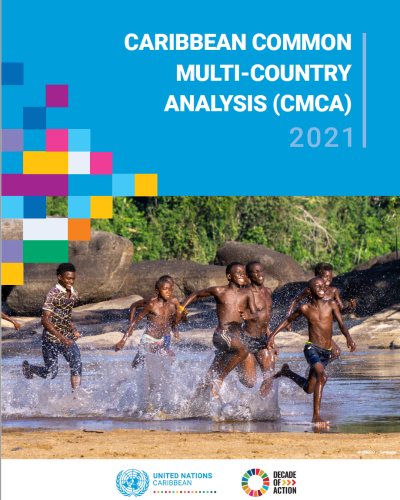Caribbean Common Multi-Country Analysis (CMCA) 2021

The purpose of this Common Multi-Country Analysis (CMCA) is to provide an objective assessment of the progress of the Caribbean region towards the achievement of the Sustainable Development Goals (SDGs) and its commitments to the 2030 Agenda for Sustainable Development. This analysis will also focus on the identification of challenges and opportunities for the development of innovative shared solutions for the 22 independent states, constituent countries, and overseas territories of the English- and the Dutch-speaking Caribbean that will be included in the next Multi-Country Sustainable Development Framework (MSDF) 2022-2026. These are Anguilla, Antigua and Barbuda, Aruba, the Bahamas, Barbados, Belize, Bermuda, British Virgin Islands, Cayman Islands, Curaçao, Dominica, Grenada, Guyana, Jamaica, Montserrat, Sint Maarten, Saint Kitts and Nevis, Saint Lucia, Saint Vincent and the Grenadines, Suriname, Trinidad and Tobago, Turks and Caicos Islands.
The CMCA covers a subregion within the Caribbean region which is home to 7,972,9881 inhabitants distributed across 437,3202 square kilometres. The sub-region is diverse in size, population, political status, government structure, official and other languages, economic and social development, United Nations membership status, and geographical landscape. All 22 countries and territories are members of the Caribbean Community (CARICOM), are classified as Small Island Development States (SIDS) under the Accelerated Modality of Action (SAMOA Pathway) and 133 belong to the Alliance of Small Island States (AOSIS).
The United Nations System (UNS) in the Caribbean includes five United Nations Country Teams (UNCTs), one United Nations Sub-Regional Team (UNST), and five Resident Coordinator Offices (RCO). They encompass all organizations of the UNS in the Caribbean, dealing with operational activities for development.




















